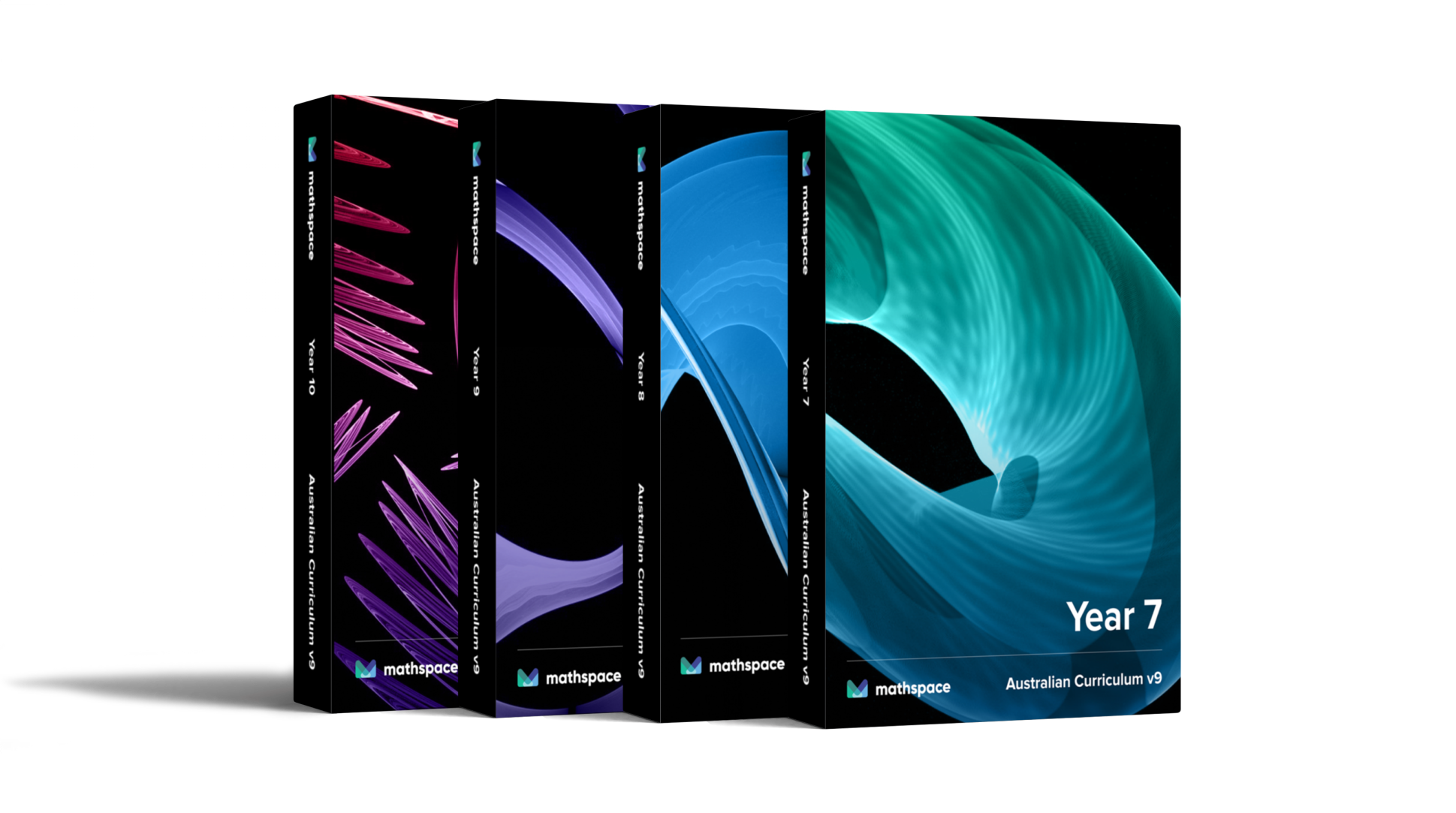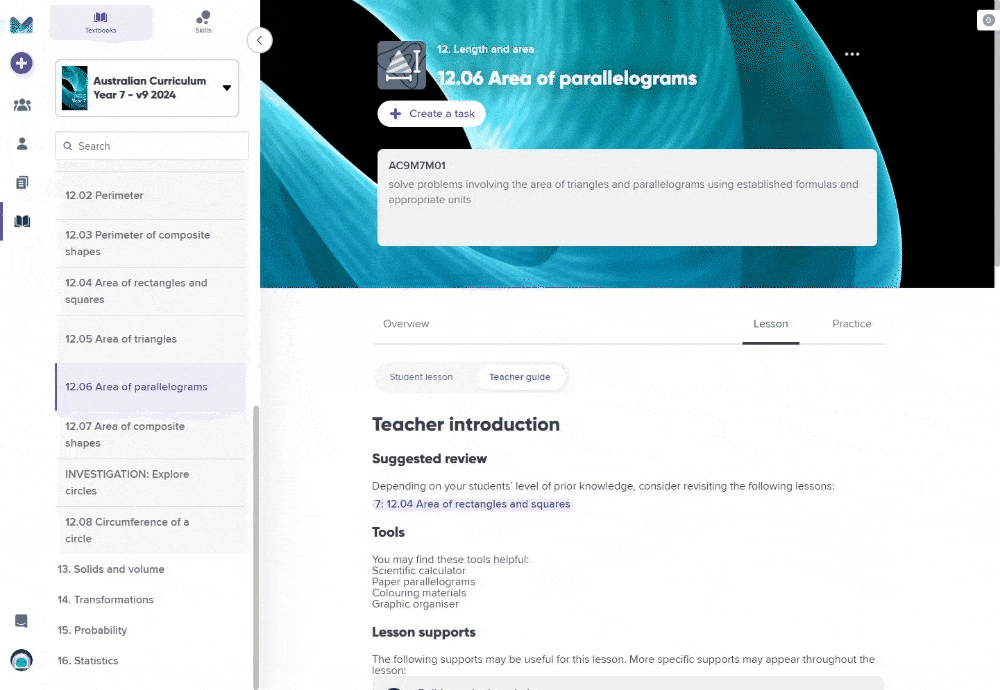Print Textbooks from Mathspace
Five reasons why schools should consider print and digital textbooks from Mathspace.

In the next three to five years, the textbook will be completely dead.
I made that prediction back in 2013.
Here we are, ten years later, and Mathspace is releasing print textbooks for the first time so I'm writing a blog post to tell you why I think schools should consider Mathspace textbooks for 2024.
But before I get into why Mathspace textbooks, why did we go for textbooks at all?
It’s something we’ve been thinking about for some time as we’ve seen slower digital adoption than we anticipated in many schools. But the real turning point was post Covid lockdowns. Like all edtech products we saw a surge of usage as schools were forced to go digital overnight and some excellent feedback from schools who were discovering new use cases for Mathspace. But post lockdowns we saw usage drop below even pre-COVID levels. We started to check in with teachers and ask why school leaders and we consistently heard, “I still love Mathspace, but for the next little while I’m going to print your lessons and worksheets and we’ll be working offline”. Educators had come to see that the kids needed to detox from digital and that sometimes pen and paper is the best option.
Now, don’t get me wrong, I’m not saying that every school should purchase print textbooks. If a school is fully digital ready and has built a good culture of avoiding digital distractions and balancing practice with offline rich tasks then by all means save yourself the money and go digital only. But at Mathspace we’re all about meeting students where they are at and given teachers the choice to override and do what’s best for their students. So with that here are 5 reasons why Mathspace textbooks are a great fit for any school navigating the offline/online world.
Reason #1: Built from scratch
Mathspace didn't have existing print textbooks so all our books are purpose built, from scratch, specifically to meet the requirements of the new curriculum - that includes Australian Curriculum version 9.0, Victorian Curriculum 2.0 and NSW Curriculum 2024.
All of our books have investigations that allow you to explore concepts in rich detail, reflecting the prioritisation of developing open-ended, higher order thinking skills that's happening across Australia. Mathematical modelling, statistical enquiry, probability simulation and algorithmic thinking are all facilitated and encouraged through the use of these investigations.

Reason #2: Seamless Print & Digital Experience
You'll find all our lesson and questions from the print textbooks in our digital textbooks too, with a familiar format and consistent labelling, including sections for Understanding, Fluency, Reasoning and Problem Solving.
This allows for the seamless switching between online and offline.
Do you prefer to digital practice and formative assessment in the classroom followed by offline practice for homework? Go for it. How about pen and paper practice in class followed by personalised adaptive practice at home. That works great. What about if you like to do algebraic topics using digital practice for the step by step feedback but prefer to get hands on with geometry. That’s a great idea. Flipped classroom anyone? Easy as!
However you prefer to teach topics or manage your classroom the ability to switch from print to digital and not add any friction gives you a lot of flexibility. A

Reason #3: Digital Enhancements for Students
Videos, interactive explorations, adaptive practice...
Every single worked example in our new digital textbooks includes a video in which a teacher walks through that problem, modelling using Mathspace and GeoGebra as and when appropriate. These videos are embedded in the lessons so students can refer to them both when reading the lesson itself, and then when working on a related task.
In addition to the videos, many of our lessons have interactive explorations. These 10-minute activities, which you might run in your classrooms or ask students to explore independently, help to really dive deeper into the concepts covered and to develop understanding over surface-level knowledge.
The final piece of the digital puzzle is adaptive practice. In addition to the questions you'll find in the worksheets or in the print textbook, our digital textbooks include questions for students to work on in the digital workbook. These questions can be assigned as part of an auto-differentiating "Adaptive task" or as part of a set you choose, a "Custom task". Either way, students get step-by-step support and feedback as they work through the problems, enabling them to learn from their mistakes and address their own misconceptions in real time.
Reason #4: Teacher Guides
Whether you've been teaching mathematics for 30 years, or your an out-of-area teacher in the maths classroom for the first time, our Teacher Guides have something for you.
Guidance on how to help English Language Learners or students with special needs or disabilities, as well as common misconceptions and ways to address them, are all found in the Lesson Supports section. In addition to that, we have a lesson plan for each subtopic which includes the student responses you might look for, purposeful questions you might ask and further misunderstandings to keep an eye out for.

Reason #5: Next Level Differentiation
Differentiated pathways call out specific questions from each of these sections and are designed help teachers differentiate on the fly whilst still allowing for whole class discussion. When building these pathways, we accounted for two aspects of student practice: ability and speed.
- Ability: the student's ability to tackle difficult problems. The easiest questions are suitable for the easy pathway and the harder ones only suitable for the hard pathway.
- Speed: Students working on the easier pathways are typically slower to complete questions as they take more time to process so the number of questions must be a consideration. For example, a student working on the medium pathway might do many of the same questions as the easier pathway but might also do a few more.
Each pathway contains a combination of questions that take about a lesson's worth of time (~35 minutes) but because we take both ability and speed into account, easier pathways tend to have both easier questions and fewer questions than harder pathways.
It's important to note that our differentiated pathways don't simply split the set of questions into three, there is overlap i.e. questions in each section that all students do - whether they're working from the print textbook, or the digital one. We intentionally did this because we wanted to allow teachers to moderate across groups and to provide opportunities for whole-class discussion when appropriate.
Above and beyond the differentiated pathways you'll find in our textbooks and the Custom tasks you can create to meet specific needs, students will also get personalised task recommendations powered by our continuous assessments - Check-Ins. For more detail on those Check-Ins and personalised recommendations, head over here.
Bonus Reason: Access to digital textbooks for all grades
After writing this post outlining the five reasons to choose Mathspace textbooks, a colleague pointed out that I'd missed a key reason that many of existing customer schools choose Mathspace. There wasn't a reason I felt I could remove so instead, here's a bonus reason to consider.
Students and teachers with a digital subscription for Mathspace get full access to textbooks for every grade. This builds upon the next level differentiation we covered above as it ensures that all students are met at their point of need, regardless of whether they're working at, below or above grade level.
Because it's always been our approach to add all relevant books to a school's bookshelf, it's something that I sometimes take for granted. But if you're only used to using print textbooks, or a digital product that limits access by book, it might just be the point of difference that means that you can meet your students' needs.
So, if you're excited about the prospect of Mathspace textbooks and want to explore your options for 2024, reach out to our team of Edtech Consultants to learn more, get a quote or get access:

